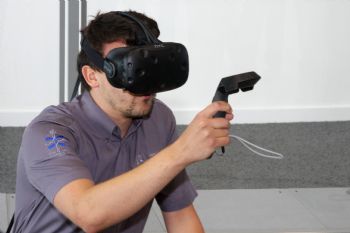
Doncaster-based Clarks Vehicle Conversions (CVC), a family-run vehicle conversion specialist, is embracing virtual reality (VR) technology to boost productivity and reduce turnround times.
A team from the Integrated Manufacturing Group (IMG) at the University of Sheffield Advanced Manufacturing Research Centre (AMRC) worked with the company to show how it can use VR to revolutionise the design stages of converting a vehicle and that with some clever optimisation of its CAD models, the process time can be improved and complexity reduced.
CVC kits out vehicles such as welfare vans, lifestyle vehicles and crew carriers to clients’ individual specifications.
The work by the IMG group was carried out as part of a five-day funded project and is part of the AMRC’s commitment to SME engagement, funded by Catapult.
Currently, when a job comes in for CVC, a skilled team of fitters, electricians, engineers, mechanics and designers has to build a physical prototype to the customer’s exact requirements.
The customer then has to visit CVC’s conversion centre to approve the van layout before it can go into production. However, if the customer wants to make any changes, this can push the delivery time back and may require a
second prototype to be built.
Jake Senior, IMG digital software engineer, showed the company how established VR technology could be used to transform the design stage of a conversion project by allowing the customer to wear a VR headset and ‘build’ a virtual bespoke prototype — rather than having to wait for a physical prototype to be built.
The customer can pick items from a displayed bill of materials and place them in an empty virtual van. When an item is chosen, the system indicates its weight, installation time and cost.
With the customer in full control of the design process, the risk of changes being required is minimised.
The use of this technology by CVC reduced the ‘order to manufacture’ time from a number of weeks (up to six) to 30 min.